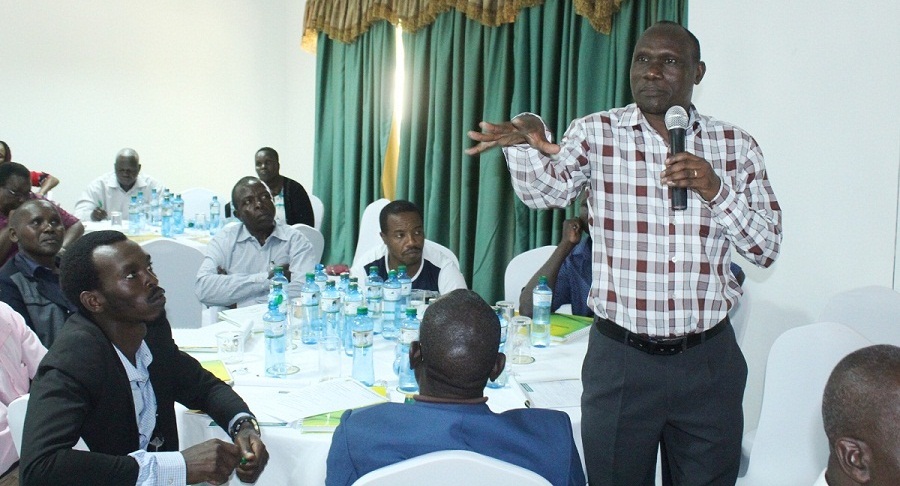By Sammy Chivanga
Savings and Credit Cooperative Societies (Saccos) are now turning to a cocktail of reward schemes to recognise and retain big savers as well as encourage other members to increase savings despite the economic hardships.
The cut-throat competition among Saccos and other financial service providers has given customers a large pool of options meaning that entities that sit back are facing the risk of losing out.
Large, medium and small Saccos are using several methods to encourage members to stay and also make use of the existing products to help their cooperatives generate revenue.
Saccos such as Unaitas, Imarika, Boresha, Qwetu, Kenya Highlands and Kwetu are among the corporates that have started various programmes to award big savers.
Kenya Highlands Chief Executive Alice Kosgei says the Sacco runs a reward scheme to recognise highest savers in terms of deposits and shares every year.
“We look at how many shares they have in the Sacco as well as their activeness in savings. Such people are the one patronising our Sacco, and they deserve recognition,” says Kosgei.
“We also recognise those who have taken loans and repaid on time. Recognition through certificates, trophies and tokens such as cash helps us to keep our members longer and encourage others to take the cue.”
Another Sacco, Unaitas, has launched loyalty dividends targeting members who have saved in the Sacco for long as well as those who regularly make use of the Sacco’s services.
The Sacco has been paying a dividend of between seven and 10 per cent over the years but has now introduced a special payout dubbed loyalty dividend that will see qualifying members earn up to an additional three per cent.
This means that those saving more and also taking and servicing loans are in line for this dividend as Unaitas eyes more deposits.
CEO Martin Muhoho says the loyalty dividend will be crucial in helping more members get hooked to Unaita’s products as opposed to just putting in money and waiting for the dividend.
“Saccos make money from members’ activities, so if one is not patronising the services, it means others are working for them and should, therefore, be rewarded,” explained Muhoho.
The recognition schemes come on the back of Sacco deposits having grown at the slowest pace in seven years amid rising loan appetite, reflecting the economic hardships facing members.
Latest data from the Sacco Society Regulatory Authority (Sasra) shows that deposits grew at 11.27 per cent to Sh380.44 billion last year from Sh341.91 billion in the previous year.
The growth rate achieved last year was from 11.99 per cent in 2018 and marked the fifth straight year of slowing pace in mobilisation of deposits- an essential resource for lending to Sacco members.
Kwetu Sacco CEO Stanley Kyelenzi says that his organisation is also eying recognition programmes and sees it as a tool of promoting savings culture.
“We have been thinking of to reward people who have saved with us for a long period and those taking big loans. This recognition can psyche others to improve their savings,” says Kyelenzi.
“We don’t have this programme now, but in our policy, we have recommended this as a priority. We believe it will help promote savings culture.”
He reckons that the competition for deposits among Saccos has gathered pace and therefore winning and retaining members will require such programs.
The slowed deposit mobilisation in Sacco movement has seen the gap between gross loans and deposits hit the high of Sh39.11 billion when compared with Sh32.37 billion in 2018.
Sasra warns that failure to mobilise enough deposits, which is a crucial source of money for lending to members, will mean Saccos borrow externally.
“This is an undesirable situation as Saccos are forced to fund the deficit from external sources, which often than not turns out to be quite expensive,” says Sasra.
Saccos have not been competitive previously, according to Kyelenzi, who adds that the emergence of many microcredit organisations means Saccos have new competitors.
“We used to be too shortsighted towards membership drive. Right now, recognition of good savers is a way of trying to make the taste of membership improve,” he told the Sacco Review.
Several other Saccos are also using their members to share success stories about savings and loan taking so that others can replicate.
For instance, Safaricom Sacco last year revealed the highest saver in the Sacco had hit Sh20 million, encouraging others to take the cue. The Sacco is facing a unique problem: that of deposits growing but members borrowing less.
It is also mulling loyalty schemes to address this problem by discouraging members from taking loans with other financial institutions amid piling liquidity at their Sacco.
The Sacco told members in the annual general meeting that if the society has high liquidity, and members are not borrowing, the excess funds could only yield meagre returns.
“As a society, we must reverse this trend because as we increase our deposits without a commensurate increase in loans, we dilute our rebates in equal measure,” said Safaricom Sacco.


